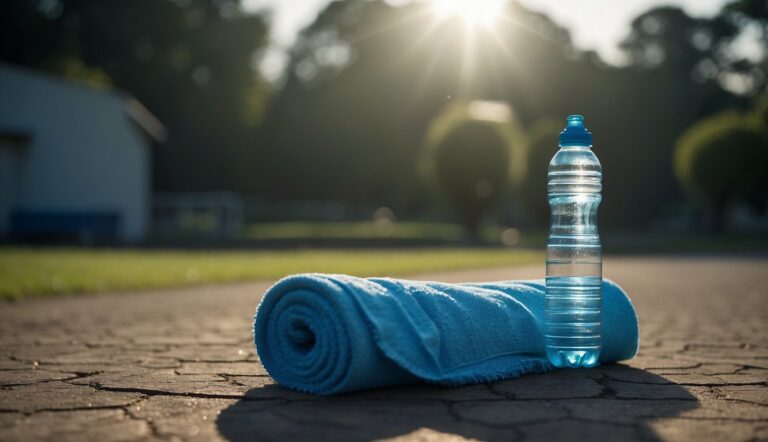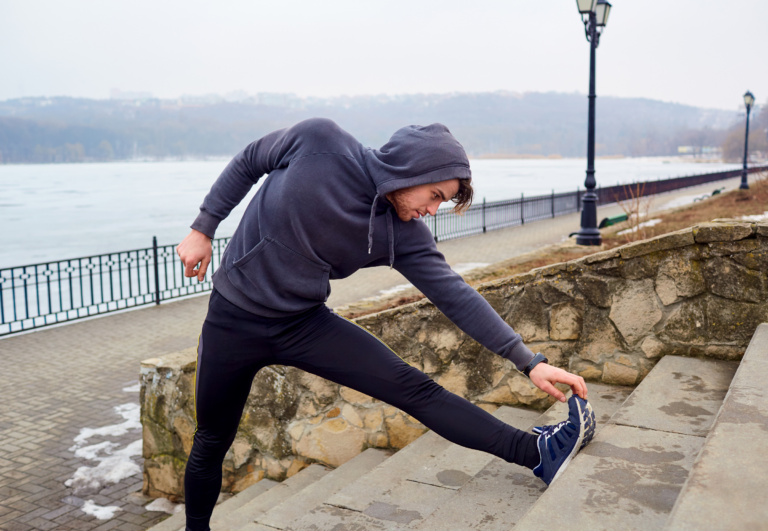How to Avoid Cramps After Running: Proven Techniques and Tips
Running is an excellent form of exercise that benefits both mind and body, but sometimes it can be hampered by muscle cramps, which are unexpected and often painful contractions of the muscles. As a running coach, I’ve seen many athletes struggle with this issue. The key to preventing muscle cramps lies in understanding why they occur and implementing strategies to avoid them before, during, and after your runs.
Hydration is fundamental to cramp prevention. Ensuring you drink enough fluids throughout the day maintains muscle function and reduces the risk of cramps. Additionally, it’s crucial to balance electrolytes — minerals like sodium, potassium, and magnesium that impact muscle contractions and hydration. Consuming a balanced diet and considering electrolyte supplements when needed can help keep cramps at bay.
Warming up and cooling down should become non-negotiable parts of your running routine. A dynamic warm-up prepares your muscles for the activity to come, while a cool-down, including static stretching, can help relax the muscles and prevent cramping post-run. Incorporating these practices along with steady, adequate hydration, and a balanced diet can significantly reduce the occurrence of running-induced muscle cramps.
Cramps After Running
Cramps can derail a great run, turning a brisk jog into a painful grind. Understanding the types of cramps that affect runners and the underlying causes can help in developing effective prevention strategies.
Types of Cramps and Their Causes
The most common cramps that runners experience are muscle cramps, which are involuntary and often painful contractions of the muscles.
They can occur in various parts of the body but are most frequently experienced in the legs. The primary causes of muscle cramps include:
- Dehydration: A lack of sufficient water intake can lead to muscle cramps.
- Imbalanced electrolytes: Critical for muscle function, an imbalance can trigger cramps.
- Overuse and fatigue: Pushing muscles beyond their limit can induce cramps.
- Inadequate nutrition: Poor dietary choices may lead to cramping due to the lack of necessary nutrients.
The Role of Electrolyte Balance
Electrolytes such as sodium, potassium, magnesium, and calcium are essential for muscle contractions and nerve function. An imbalance can lead to cramps for several reasons:
- Sodium: Lost through sweat, sodium is crucial for fluid balance and nerve function.
- Potassium: Key for muscle contractions and recovery, low levels can increase cramp risk.
- Magnesium: Deficiency may cause muscle twitches and cramps.
- Calcium: Important for muscle contractions; low levels can cause spasm and cramps.
Developing a hydration strategy that includes maintaining electrolyte balance is pivotal in preventing cramps. This can involve drinking fluids with added electrolytes or consuming electrolyte-rich foods.
Hydration Strategy:
- Before run: Ensure adequate hydration levels without over-consuming liquids right before running.
- During run: Sip on a balanced electrolyte replacement as needed.
- Post-run: Replenish fluids and electrolytes lost during the run.
By addressing these aspects, runners can reduce the likelihood of cramps and improve their overall running experience.

Proper Running Technique
To avoid cramps after running, honing your running technique is critical. A strong focus on proper form and incorporating strength training can make all the difference.
Optimizing Form and Posture
My experience has taught me that running with correct form is essential to prevent cramps. Your posture should be upright while maintaining a slight forward lean from the ankles, not the waist. Here are specific aspects to consider:
- Head: Keep your gaze forward and neck neutral.
- Shoulders: They should be relaxed, not hunched.
- Arms: Bend arms at approximately 90 degrees, swinging them from the shoulders.
Ensure your footfalls are directly beneath your center of gravity, and maintain a consistent, comfortable pace. Avoid overstriding, which increases impact forces and can lead to cramping.
Incorporating Strength Training
Integrating strength training into your routine fortifies core muscles, which are integral to maintaining good posture while running. Core muscle stability helps distribute stress more evenly and prevents muscle imbalances that may cause cramps.
- Core Workouts: Include planks, bridges, and abdominal exercises two to three times a week.
- Leg Strength: Squats, lunges, and deadlifts will build strength in your lower body, supporting your running form.
In conclusion, combining strength training with focused form practice will enhance your running mechanic’s efficiency, reducing the risk of post-run cramps. Remember, consistency is key, and sometimes working with a running coach can provide personalized advice to further refine your technique.
Pre-Run Preparation
To ensure a smooth and cramp-free run, thorough preparation is essential. The focus should be on warming up properly and adopting a suitable hydration and nutrition strategy that resonates with the demands of running.
Effective Warm-Up Routines
Before setting out for a run, I always dedicate time to a comprehensive warm-up routine.
This preparation serves as a signal to my body, gearing up the muscle groups for the activity ahead.
- Dynamic Stretches: Begin with 5-10 minutes of dynamic stretches targeting key muscles such as hamstrings, quadriceps, and calves. These movements promote range of motion and blood flow.
- Gradual Jog: After stretching, progress to a slow, 5-minute jog to raise the heart rate gradually and minimize the shock to the muscles when transitioning to a full run.
Hydration and Nutritional Strategies
My hydration strategy begins well before the run. I make sure to drink water throughout the day, aiming for clear to pale yellow urine as a sign of proper hydration.
- Water Intake: About 1-2 hours before running, I consume 16-20 ounces (about 500 mL) of water. This allows time for the body to process the fluid and reduces the need for mid-run bathroom breaks.
- Electrolyte Balance: Especially during longer runs or in hot weather, I add electrolytes to maintain the necessary balance in my body fluids.
| Electrolyte Source | Example |
|---|---|
| Commercial Tablets | Salt tablets tailored for runners |
| Natural Foods | Banana for potassium, salted nuts for sodium |
Nutrition should neither be too heavy nor too close to run time. A small, carbohydrate-rich snack about an hour before can provide the needed energy without causing discomfort.
By adhering to these pre-run essentials, you put yourself in the best position to avoid cramps and enhance your running performance.
During the Run
During a run, it’s crucial to manage pacing and hydration, while also being mindful of muscle fatigue. These two factors can significantly influence whether cramps occur after running.
Pacing and Hydration
To maintain proper hydration, I recommend drinking fluids before, during, and after the run. Here’s a quick and straightforward hydration strategy:
- Pre-Run (1-2 hours before): Drink about 500ml (17 oz) of water.
- During Your Run: Aim for around 200ml (7 oz) of water every 20 minutes.
Remember, cramping can be a sign of dehydration, so adjusting your fluid intake based on weather conditions and personal sweat rate is important.
For pacing, it is vital to stay within your fitness level to prevent cramping. Start at a moderate pace and gradually increase your intensity, ensuring that you’re not overexerting yourself too early in the run. My rule of thumb is to run at a pace where I can maintain a conversation without getting winded.
Managing Muscle Fatigue
Muscle fatigue can set in when muscles are overworked or not given enough time to recover. To combat this, focus on:
- Breathing: Maintain deep, rhythmic breaths to ensure muscles receive adequate oxygen. A tip I often share is to synchronize your breathing with your steps, like inhaling for three steps and exhaling for two.
- Endurance: Increase your running distance progressively to build endurance. This gradual approach helps condition your muscles over time and can reduce the likelihood of cramping.
Balancing your effort is key; listen to your body and take rest if needed. Regularly incorporating strength training exercises can also enhance your muscle endurance.
Post-Run Recovery
Effective post-run recovery reduces muscle soreness and prevents cramps. It hinges on two crucial actions: a proper cool down with stretching and ensuring adequate hydration and electrolyte balance.
Cool Down and Stretching
After concluding a run, it’s essential to spend time cooling down to transition the body back to a resting state.
This involves a brief period of light jogging or walking to gradually lower heart rate. Following the cool down, I advocate for 10 to 20 minutes of post-run stretches to aid in lactic acid removal from the muscles, thus lessening stiffness and soreness.
Post-Run Stretching Routine:
- Hamstring Stretch
- Quadriceps Stretch
- Calf Stretch
- Hip Flexor Stretch
- Glute Stretch
Replenishing Fluids and Electrolytes
Restoring fluid and electrolyte balance post-run is paramount for recovery. I recommend steady fluid intake throughout the day, aiming for at least 80-120 ounces, and not solely right before a run.
After running, a sports drink like Nuun Sport can replenish electrolytes lost through sweat. For cramp prevention, maintaining proper hydration is as important as the run itself.
Hydration Solutions:
- Water: 80-120 ounces daily
- Sports Drinks: Containing electrolytes post-run
- Recovery Shakes: Offer hydration with added protein for muscle repair






